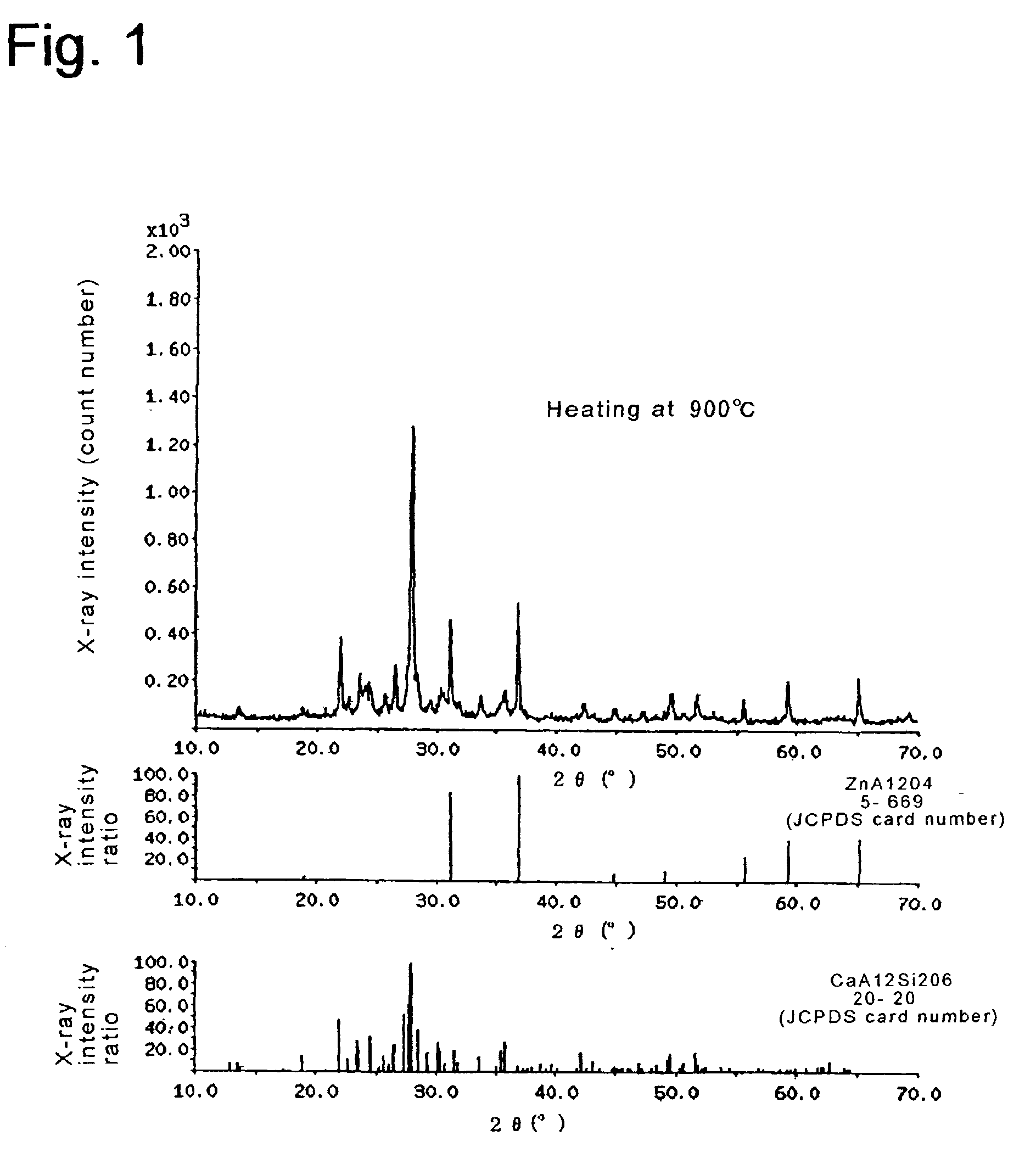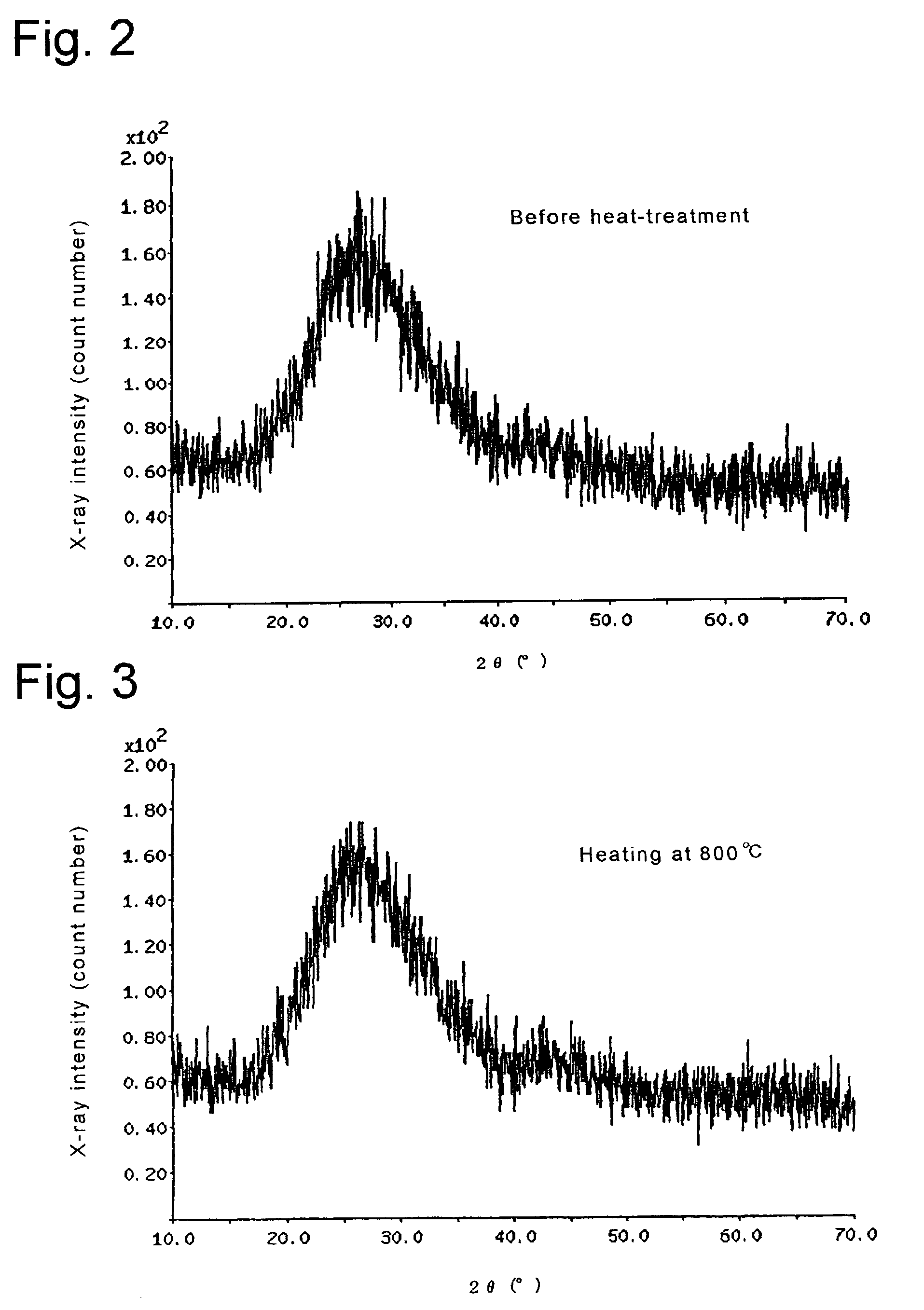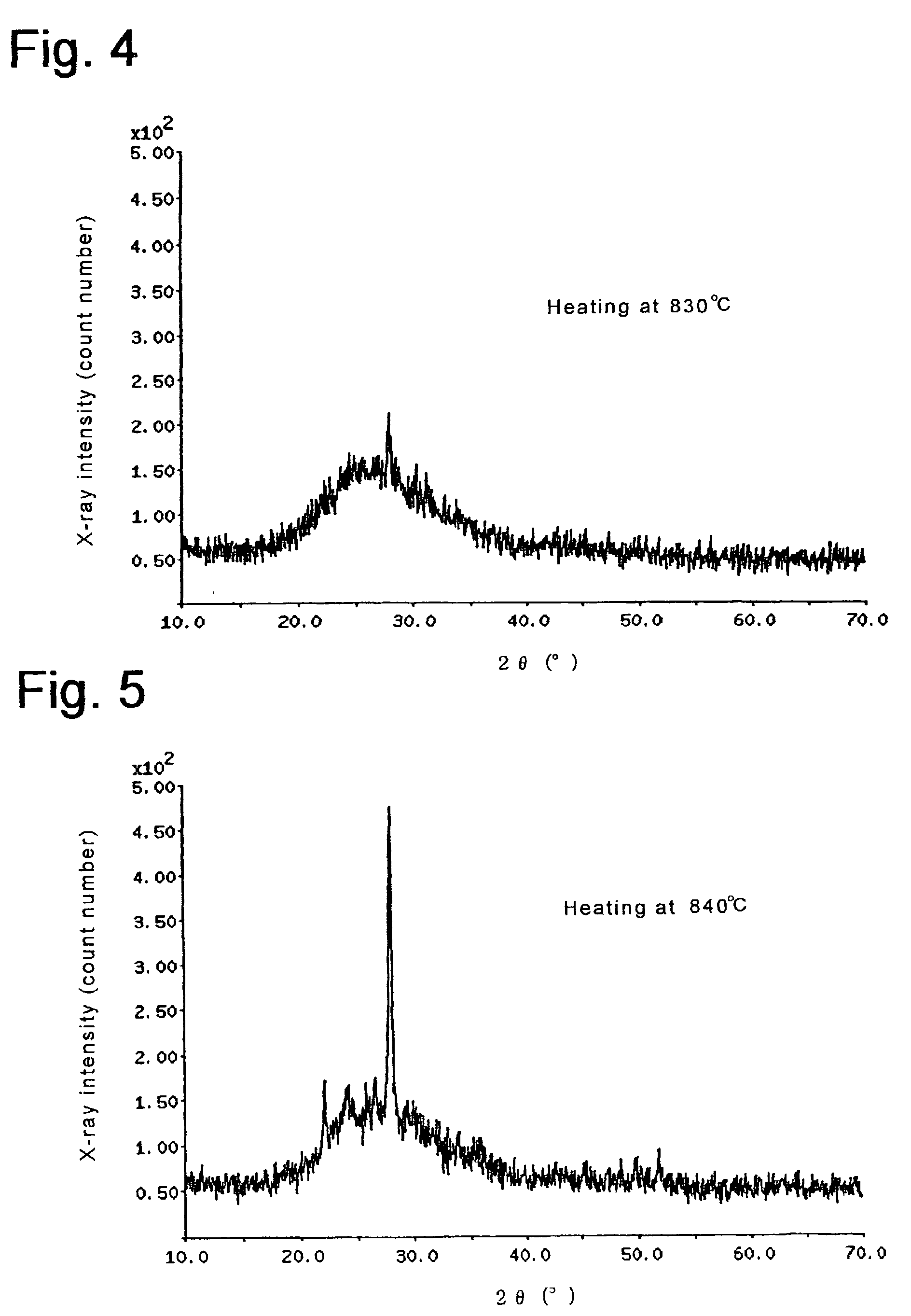Jointed body of glass-ceramic and aluminum nitride sintered compact and method for producing the same
a technology of glass-ceramic and aluminum nitride, which is applied in the direction of basic electric elements, electrical apparatus, solid-state devices, etc., can solve the problems of high electric resistance, adversely affecting terrestrial environments, and no single insulating substrate material meeting all of these conditions, and achieves high electrical resistance
- Summary
- Abstract
- Description
- Claims
- Application Information
AI Technical Summary
Benefits of technology
Problems solved by technology
Method used
Image
Examples
referential examples
AND REFERENTIAL EXAMPLES
[0121] Hereinafter the present invention is explained more specifically, referring to working examples, it being understood that the present invention is not limited to these examples.
example 1
[0122] Starting materials were mixed in a ball mill by dry system, to give 60 g of a starting blend consisting of CaO: 15 wt %, Al.sub.2O.sub.3: 24 wt %, SiO.sub.2: 42 wt %, B.sub.2O.sub.3: 8 wt % and ZnO: 11 wt %. This blend was placed in a platinum crucible and fused at 1600.degree. C. The starting materials used were oxide powders, excepting that CaCO.sub.3 powder was used as the CaO source. The fusion fluid was let flow on water-cooled stainless steel plate and quenched to provide a glass. Upon examining by powder X-ray diffraction, this glass was found amorphous. Its diffraction chart is shown as FIG. 2.
[0123] The glass was then pulverized in a ball mill to an average particle size of 5 .mu.m, and the resulting powder was heated in an alumina crucibles at a temperature rise rate of 20.degree. C. / min, to be maintained at temperatures of 800.degree. C., 830.degree. C., 840.degree. C., 850.degree. C., 875.degree. C., 900.degree. C. and 1000.degree. C., respectively, all for 20 min...
referential example 1
[0133] An amorphous glass having a composition of CaO: 16 wt %, Al.sub.2O.sub.3: 27 wt %, SiO.sub.2: 44 wt %, B.sub.2O.sub.3: 9 wt % and MgO: 4 wt % was prepared similarly to Example 1, and the amorphous glass was heated at the various temperatures of 800.degree. C., 850.degree. C., 900.degree. C. and 1,000.degree. C., for 20 minutes. Their X-ray diffraction patterns after the heating were shown in FIGS. 10-12, respectively.
[0134] X-ray intensity values at 2.theta.=27.6.degree.-28.2.degree. of these heated glasses are shown in Table 1. crystals precipitated in this glass were invariably anorthite crystals.
[0135] As is clear from Table 1, the glass containing a Zn component of Example 1 separated anorthite crystals at lower temperatures than the glass not containing Zn component used in Referential Example 1. That is, in the glass of Example 1, anorthite crystals started to separate at 830.degree. C., the crystals grew at 840.degree. C. and rapidly increased under heating at 850.degr...
PUM
| Property | Measurement | Unit |
|---|---|---|
| temperatures | aaaaa | aaaaa |
| temperature | aaaaa | aaaaa |
| melting point | aaaaa | aaaaa |
Abstract
Description
Claims
Application Information
 Login to View More
Login to View More - R&D
- Intellectual Property
- Life Sciences
- Materials
- Tech Scout
- Unparalleled Data Quality
- Higher Quality Content
- 60% Fewer Hallucinations
Browse by: Latest US Patents, China's latest patents, Technical Efficacy Thesaurus, Application Domain, Technology Topic, Popular Technical Reports.
© 2025 PatSnap. All rights reserved.Legal|Privacy policy|Modern Slavery Act Transparency Statement|Sitemap|About US| Contact US: help@patsnap.com



